M2 Pro, M2 Max, and beyond: Examining the Apple Silicon release cycle
With the introduction of the M2 chip, rumors have already started about Apple's next chip launches. Here's when to expect Apple's next Apple Silicon launches.
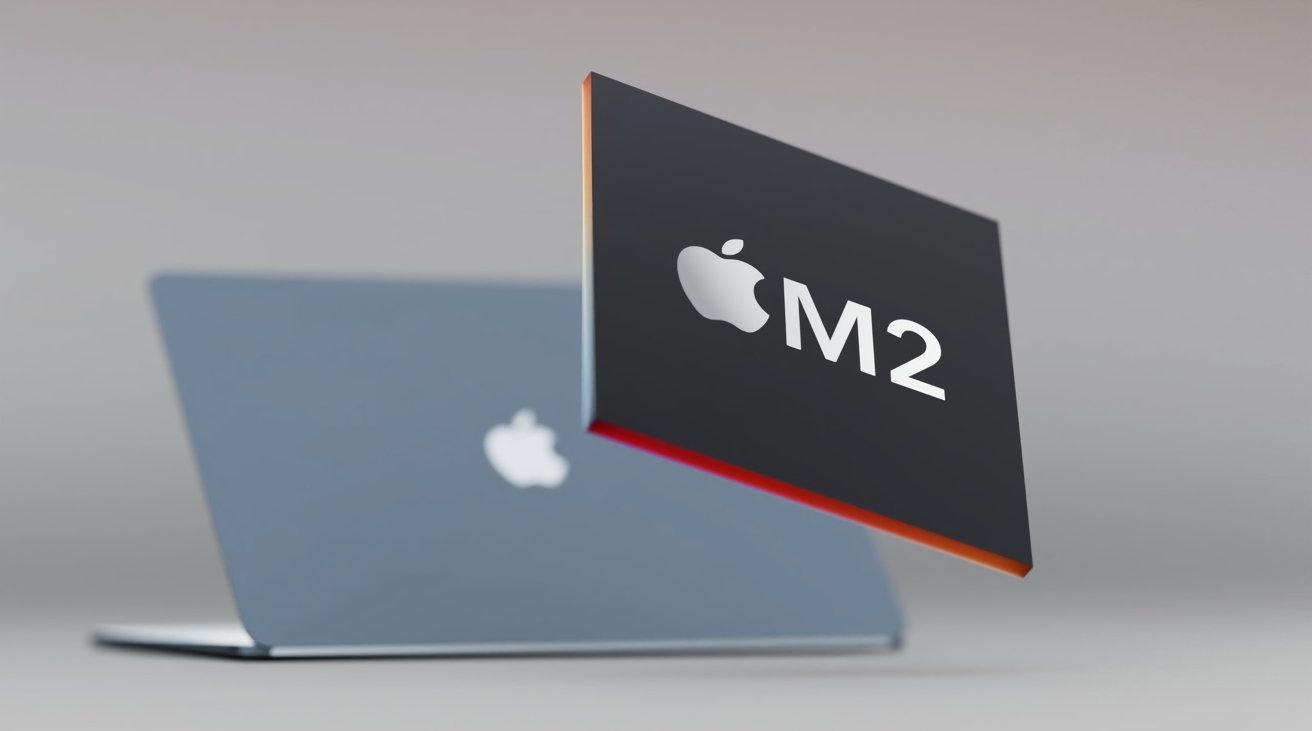
Apple is now firmly in the second generation of its M2 chip generation, shipping the first devices housing the updated SoC design. So far, it has only brought out the M2, but more are expected to be on the horizon.
After practically two years under the first generation, which involved four released variations of the M1 chip, the start of a new cycle raises fresh queries, including what Apple will bring out next and when it will happen.
AppleInsider has already looked into its crystal ball to speculate about the M2 Pro, M2 Max, and M2 Ultra releases. That forecast indicates the next batch of chips could be an extremely useful upgrade for Mac users down the road.
How far down that road is another matter entirely.
Given what we know about the M1 generation and rumors about the second, some educational guesses can be made on when Apple's next Apple Silicon moves will take place.
With the exception of products like the single-generation AirTag, some AirPods models, HomePod, and relatively few others, Apple has a tendency to regularly update its hardware to a fairly fixed schedule.
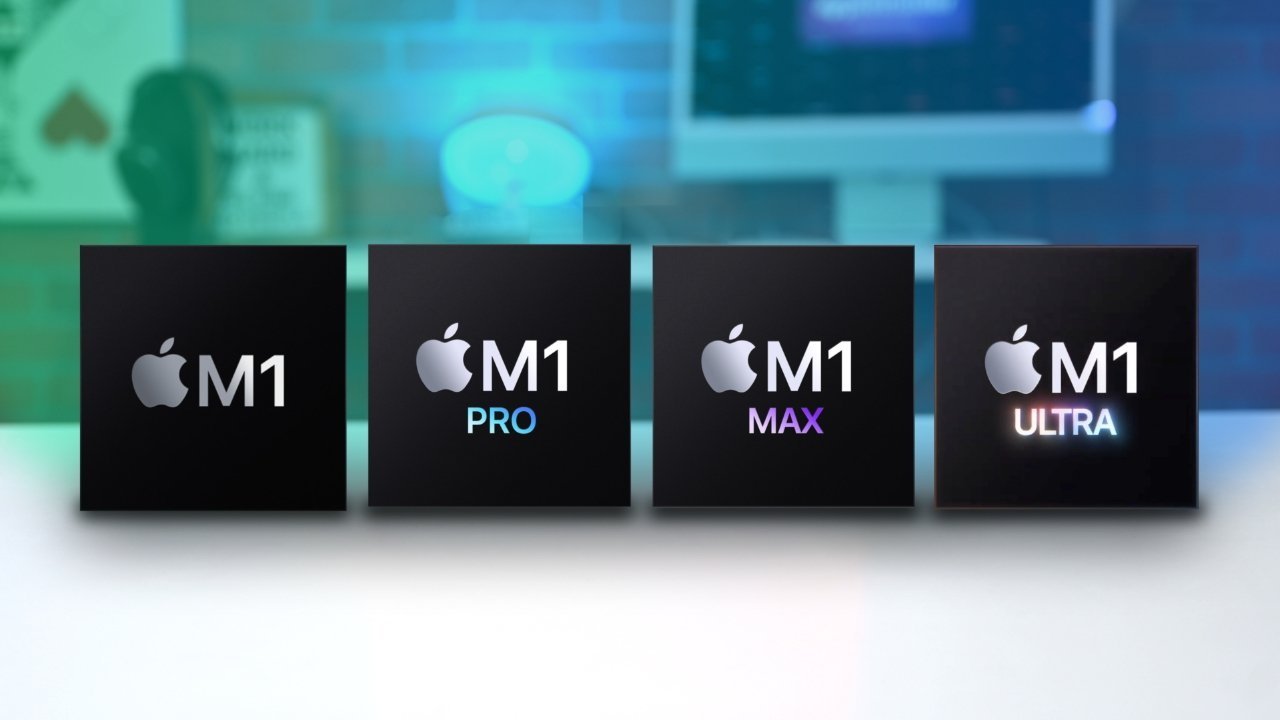
The M1 family of SoCs.
This is unsurprising considering it is a massive operation valued in trillions of dollars. With wealthy shareholders to answer to each quarter, it must carefully contemplate its activities.
Preparing updates to products that ship in the millions is a logistical nightmare, requiring intensive scheduling and budgeting to get right. For some products, this could mean laying the supply chain groundwork months or even years in advance.
The reasons for sticking to a predefined cadence aren't just an operations issue. It can also be a consumer-oriented one.
Buyers of hardware, especially bleeding-edge purchasers, want to know that their devices will be at the forefront of performance for a reasonable amount of time before being usurped by newer, faster products. For devices costing thousands of dollars sometimes, such buying decisions can be tough for consumers.
If you're shelling out thousands for a just-launched 16-inch MacBook Pro with the fastest possible configurable chip, the last thing you want is to find Apple updates the model a few months later, with new features and a better configuration. Buyer's remorse can be a killer to a brand.
A year's gap between updates in an iPhone may be acceptable, partly because Apple has adopted that cadence for that product line. That gap has to widen for a potentially more expensive and less frequently updated device like a MacBook Pro, or else consumers will be upset.
This means that, for the M2 Apple Silicon generation, we do have to look at Apple's timing for its launch against the M1 and take that into account with our forecasts.
The M1 generation started with Apple's introduction of Apple Silicon itself, which took place during WWDC 2020. While it didn't release actual consumer hardware during the event, it did lay the groundwork for the chips by providing developers with a modified Mac mini.
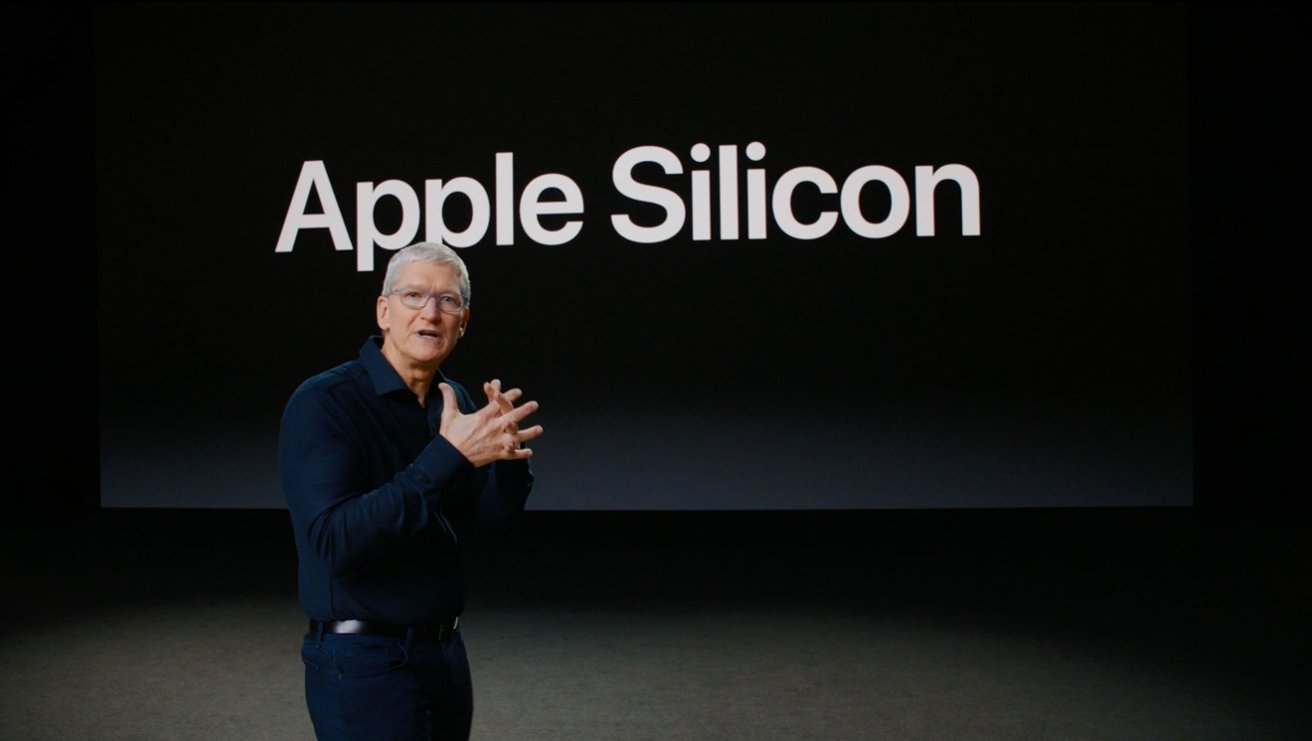
Apple CEO Tim Cook introducing Apple Silicon during WWDC 2020
Apple didn't actually introduce M1 itself until November 2020, which it did alongside the first Apple Silicon hardware launches: Mac mini, MacBook Air, and the 13-inch MacBook Pro.
There wasn't any further movement forward on M1 until five months later, with the introduction of the 24-inch iMac, as well as adding the chip to the iPad Pro lineup.
The M1 Pro and M1 Max didn't appear until October 2021, almost a year after the original M1 landed and 16 months after Apple first introduced Apple Silicon. The 14-inch MacBook Pro and 16-inch MacBook Pro were the vessels for the new chip pairing, but even then, Apple wasn't finished.
It wasn't until March 2022 that Apple brought out the Mac Studio and the last M1-series chip, the M1 Ultra. That occurred a year and nine months after Apple Silicon's launch, a year and four months after M1 was introduced, and five months after the M1 Max the Ultra is based on.
If we were working on a proper two-year cycle for launches, the WWDC 2022 event would've had Apple talking about a "next-generation Apple Silicon chip" without naming it and certainly without any hardware launches.
Instead, we had M2, the MacBook Air got overhauled, and the 13-inch MacBook Pro got a chip change.
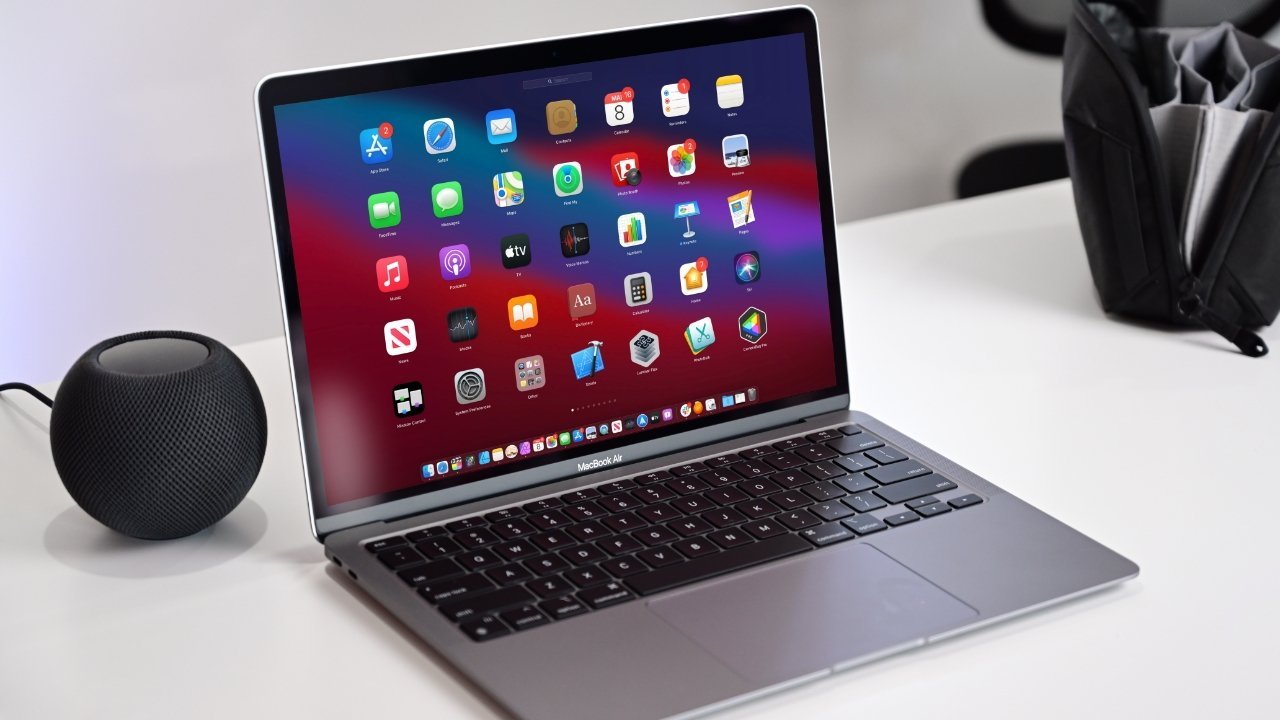
The M2-equipped MacBook Air
You could interpret this as Apple running to a 19-month cadence, but that seems unfitting for Apple. It could just as easily be Apple taking advantage of the early stages of creating a release cycle to shift its Apple Silicon update timing to coincide with WWDC, instead of later in the year, as it did with M1.
It's entirely plausible that Apple could be aiming for a 2-year Apple Silicon release schedule centered around WWDC.
As for product launches, a two-year update cycle for a Mac isn't entirely unreasonable to expect. Even a 1.5-year cycle isn't too bad, or even an annual refresh that could include minor incremental changes some years.
On M2-specific rumors, a late June claim had Apple booking capacity with chip partner TSMC to use a 3-nanometer process for its next chip line, instead of the 5-nanometer techniques used on the existing Apple Silicon lineup. The report said it would be used on M2 Pro and higher chip tiers, with volume production starting in late 2022.
Returning to Macs, February had a report outlining Apple's attempts to bring out more Macs in 2022, including a 24-inch iMac with M2, an updated iMac Pro, and whatever Apple's plans are for the Mac Pro.
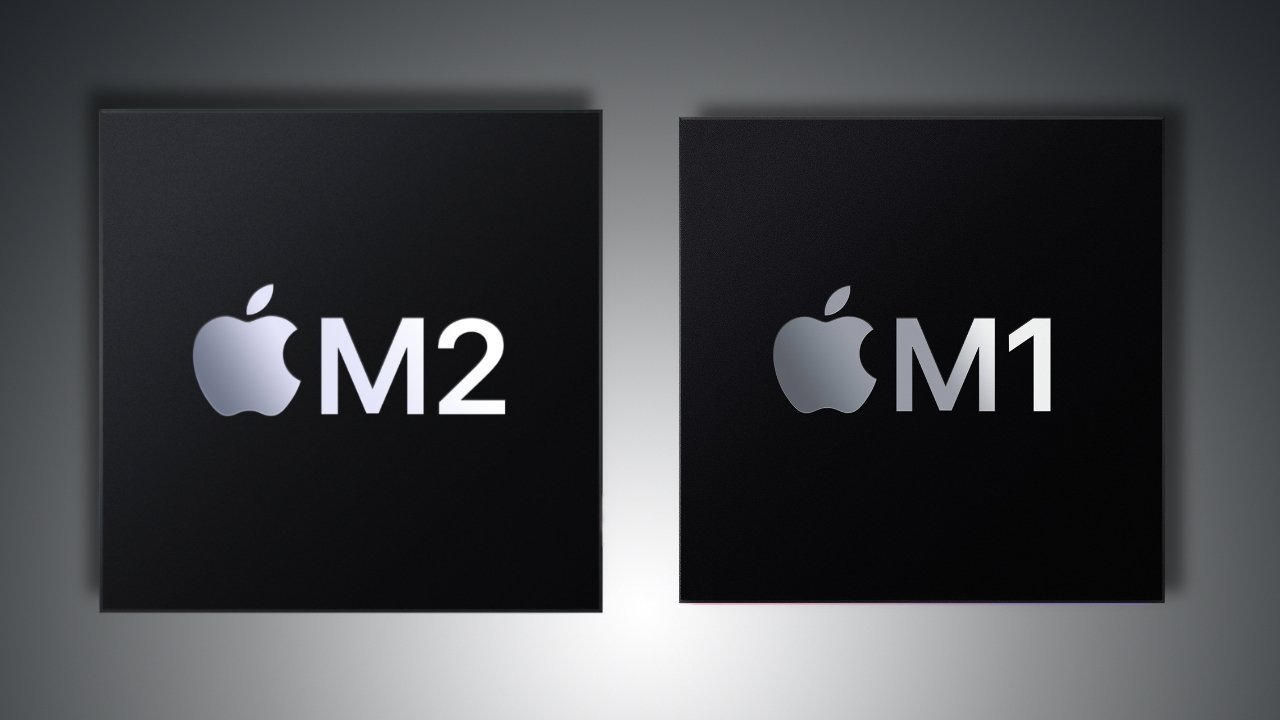
M2's initial release was similar in nature to the M1.
By March, after the launch of the Mac Studio, Apple was thought to be preparing a Mac mini with M2 for release later in the year, while an M2 Pro-equipped version was also being worked on, albeit without an intended release date.
It was around this same time period that Apple would reportedly bring out the M2 MacBook Air and 13-inch MacBook Pro in "late 2022." Obviously, that was incorrect.
By June, the rumor mill started up again with the M2 Apple Silicon claims, including a supposed 12-inch MacBook and a 15-inch MacBook Air. Both would run M2, but with expected release dates for the end of 2023 or early 2024.
Others were quick to doubt the existence of the 12-inch model, while at the same time supporting the 15-inch MacBook Air rumor, with an additional caveat of an M2 Pro version on the way.
By late June, a report floated the idea of an M2 Pro Mac mini, and M2 Pro and M2 Max-equipped 14-inch MacBook Pro, and 16-inch MacBook Pro sometime in the next year, as well as an M2 Ultra and "M2 Extreme" Mac Pro at some point.
Interestingly, that report also said that Apple was not only working on M3, the next generation, but that it was also planning to use it as early as "next year," meaning 2023.
If true, this could shorten the chip launch cadence by a few months, potentially matching a 1.5-year cycle.
These processes take months to play through and can last over a year before reaching the manufacturing stage. Then, Apple must work with its partners in the supply chain to create parts, which can take months to complete to Apple's standard of quality.
In the case of Apple Silicon, Apple has to turn to TSMC, its sole partner on SoCs used throughout its ecosystem.
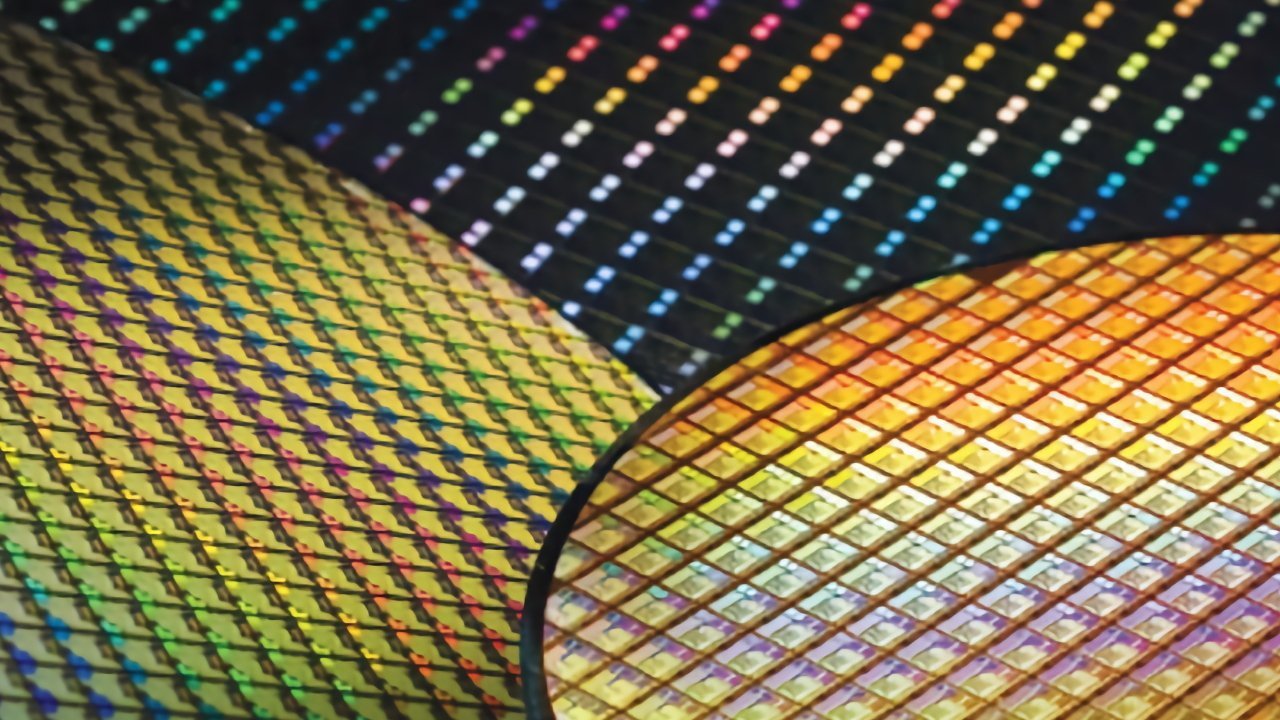
TSMC is a major partner to Apple, since it makes Apple Silicon chips.
TSMC doesn't just work with Apple, but Cupertino is one of its biggest clients.
The closeness of the two has led to Apple being in an advantageous position amid the global semiconductor shortage. A problem that has led to reduced production of chips used in many different industries and obviously could affect Apple.
So far, Apple has been insulated from the chip crisis due to working with TSMC well in advance, and it seems the situation will remain stable for the moment.
Like other chip companies, TSMC is working to expand its production capabilities to combat the global shortage of chips. That includes 3-nanometer factories that could be used in the as-rumored future M2 Pro's production.
The global shortage could be a factor in extending the timeline of Apple's future M2 chip launches and product releases. Except both Apple and TSMC are working to avoid that becoming a reality.
Once established, Apple could easily bring its Apple Silicon product launches into a similar cadence as its previous Intel-based product updates. It's just a little too early in the Apple Silicon lifecycle to pin it down.
As a guess for when Apple could bring out the next versions of its chips, based on a sub-two-year cadence and rumors, something like the M2 Pro and M2 Max could surface in late 2022, if not early 2023.
If the rumors of a shift to 3-nanometer production are true, then it would be extremely unlikely for M2 Pro and M2 Max to arrive before early 2023. If false and Apple sticks to 5-nanometer, then the late-2022 schedule is a lot more viable.
The M2 Ultra and the supposed "M2 Extreme" will be a while longer again, towards the tail end of the overall cycle. If the cadence is closer to one year than two, that could be around WWDC time, though more likely later on in 2023 itself.
Apple could even introduce M3 by WWDC 2023 if it wanted to, but that would severely compress the M2 lifecycle and be a further tweak from the expected cadence.
Whether it actually does so is another matter entirely.
Read on AppleInsider

Apple is now firmly in the second generation of its M2 chip generation, shipping the first devices housing the updated SoC design. So far, it has only brought out the M2, but more are expected to be on the horizon.
After practically two years under the first generation, which involved four released variations of the M1 chip, the start of a new cycle raises fresh queries, including what Apple will bring out next and when it will happen.
AppleInsider has already looked into its crystal ball to speculate about the M2 Pro, M2 Max, and M2 Ultra releases. That forecast indicates the next batch of chips could be an extremely useful upgrade for Mac users down the road.
How far down that road is another matter entirely.
Given what we know about the M1 generation and rumors about the second, some educational guesses can be made on when Apple's next Apple Silicon moves will take place.
A trillion-dollar creature of habit
One of the big lessons observers of Apple can take is that it is a habitual company. It's obvious when you examine the cadence of product launches throughout the year, the annual iPhone updates that follow the same trends each time, and the gradual changes to the overall product lineup.With the exception of products like the single-generation AirTag, some AirPods models, HomePod, and relatively few others, Apple has a tendency to regularly update its hardware to a fairly fixed schedule.

The M1 family of SoCs.
This is unsurprising considering it is a massive operation valued in trillions of dollars. With wealthy shareholders to answer to each quarter, it must carefully contemplate its activities.
Preparing updates to products that ship in the millions is a logistical nightmare, requiring intensive scheduling and budgeting to get right. For some products, this could mean laying the supply chain groundwork months or even years in advance.
The reasons for sticking to a predefined cadence aren't just an operations issue. It can also be a consumer-oriented one.
Buyers of hardware, especially bleeding-edge purchasers, want to know that their devices will be at the forefront of performance for a reasonable amount of time before being usurped by newer, faster products. For devices costing thousands of dollars sometimes, such buying decisions can be tough for consumers.
If you're shelling out thousands for a just-launched 16-inch MacBook Pro with the fastest possible configurable chip, the last thing you want is to find Apple updates the model a few months later, with new features and a better configuration. Buyer's remorse can be a killer to a brand.
A year's gap between updates in an iPhone may be acceptable, partly because Apple has adopted that cadence for that product line. That gap has to widen for a potentially more expensive and less frequently updated device like a MacBook Pro, or else consumers will be upset.
This means that, for the M2 Apple Silicon generation, we do have to look at Apple's timing for its launch against the M1 and take that into account with our forecasts.
The M1 schedule
Since repetition is a theme for Apple, it makes sense that any analysis of the M2 series schedule should consider what Apple did for the M1.The M1 generation started with Apple's introduction of Apple Silicon itself, which took place during WWDC 2020. While it didn't release actual consumer hardware during the event, it did lay the groundwork for the chips by providing developers with a modified Mac mini.
Apple CEO Tim Cook introducing Apple Silicon during WWDC 2020
Apple didn't actually introduce M1 itself until November 2020, which it did alongside the first Apple Silicon hardware launches: Mac mini, MacBook Air, and the 13-inch MacBook Pro.
There wasn't any further movement forward on M1 until five months later, with the introduction of the 24-inch iMac, as well as adding the chip to the iPad Pro lineup.
The M1 Pro and M1 Max didn't appear until October 2021, almost a year after the original M1 landed and 16 months after Apple first introduced Apple Silicon. The 14-inch MacBook Pro and 16-inch MacBook Pro were the vessels for the new chip pairing, but even then, Apple wasn't finished.
It wasn't until March 2022 that Apple brought out the Mac Studio and the last M1-series chip, the M1 Ultra. That occurred a year and nine months after Apple Silicon's launch, a year and four months after M1 was introduced, and five months after the M1 Max the Ultra is based on.
What's the frequency, Kenneth?
With the launch of M2 at WWDC, you could reasonably assume that the event was the end of Apple's two-year transition period. M2 appeared approximately 19 months after M1, just eight months after M1 Pro and M1 Max, and a mere three months after M1 Ultra.If we were working on a proper two-year cycle for launches, the WWDC 2022 event would've had Apple talking about a "next-generation Apple Silicon chip" without naming it and certainly without any hardware launches.
Instead, we had M2, the MacBook Air got overhauled, and the 13-inch MacBook Pro got a chip change.

The M2-equipped MacBook Air
You could interpret this as Apple running to a 19-month cadence, but that seems unfitting for Apple. It could just as easily be Apple taking advantage of the early stages of creating a release cycle to shift its Apple Silicon update timing to coincide with WWDC, instead of later in the year, as it did with M1.
It's entirely plausible that Apple could be aiming for a 2-year Apple Silicon release schedule centered around WWDC.
As for product launches, a two-year update cycle for a Mac isn't entirely unreasonable to expect. Even a 1.5-year cycle isn't too bad, or even an annual refresh that could include minor incremental changes some years.
Rumored M2 moves
For the most part, the rumor mill tends to focus on products that will be sold to consumers rather than specific components, and this applies to Apple Silicon Macs.On M2-specific rumors, a late June claim had Apple booking capacity with chip partner TSMC to use a 3-nanometer process for its next chip line, instead of the 5-nanometer techniques used on the existing Apple Silicon lineup. The report said it would be used on M2 Pro and higher chip tiers, with volume production starting in late 2022.
Returning to Macs, February had a report outlining Apple's attempts to bring out more Macs in 2022, including a 24-inch iMac with M2, an updated iMac Pro, and whatever Apple's plans are for the Mac Pro.

M2's initial release was similar in nature to the M1.
By March, after the launch of the Mac Studio, Apple was thought to be preparing a Mac mini with M2 for release later in the year, while an M2 Pro-equipped version was also being worked on, albeit without an intended release date.
It was around this same time period that Apple would reportedly bring out the M2 MacBook Air and 13-inch MacBook Pro in "late 2022." Obviously, that was incorrect.
By June, the rumor mill started up again with the M2 Apple Silicon claims, including a supposed 12-inch MacBook and a 15-inch MacBook Air. Both would run M2, but with expected release dates for the end of 2023 or early 2024.
Others were quick to doubt the existence of the 12-inch model, while at the same time supporting the 15-inch MacBook Air rumor, with an additional caveat of an M2 Pro version on the way.
By late June, a report floated the idea of an M2 Pro Mac mini, and M2 Pro and M2 Max-equipped 14-inch MacBook Pro, and 16-inch MacBook Pro sometime in the next year, as well as an M2 Ultra and "M2 Extreme" Mac Pro at some point.
Interestingly, that report also said that Apple was not only working on M3, the next generation, but that it was also planning to use it as early as "next year," meaning 2023.
If true, this could shorten the chip launch cadence by a few months, potentially matching a 1.5-year cycle.
The almighty supply chain
Apple's internal work on its next-generation chips isn't surprising to anyone. Neither is the lengthy development cycle for its products and the components that go into the devices.These processes take months to play through and can last over a year before reaching the manufacturing stage. Then, Apple must work with its partners in the supply chain to create parts, which can take months to complete to Apple's standard of quality.
In the case of Apple Silicon, Apple has to turn to TSMC, its sole partner on SoCs used throughout its ecosystem.

TSMC is a major partner to Apple, since it makes Apple Silicon chips.
TSMC doesn't just work with Apple, but Cupertino is one of its biggest clients.
The closeness of the two has led to Apple being in an advantageous position amid the global semiconductor shortage. A problem that has led to reduced production of chips used in many different industries and obviously could affect Apple.
So far, Apple has been insulated from the chip crisis due to working with TSMC well in advance, and it seems the situation will remain stable for the moment.
Like other chip companies, TSMC is working to expand its production capabilities to combat the global shortage of chips. That includes 3-nanometer factories that could be used in the as-rumored future M2 Pro's production.
The global shortage could be a factor in extending the timeline of Apple's future M2 chip launches and product releases. Except both Apple and TSMC are working to avoid that becoming a reality.
It's anyone's guess, but estimates can be made
No-one outside of Apple knows precisely when the company will release new Apple Silicon chips and hardware that will run it.Once established, Apple could easily bring its Apple Silicon product launches into a similar cadence as its previous Intel-based product updates. It's just a little too early in the Apple Silicon lifecycle to pin it down.
As a guess for when Apple could bring out the next versions of its chips, based on a sub-two-year cadence and rumors, something like the M2 Pro and M2 Max could surface in late 2022, if not early 2023.
If the rumors of a shift to 3-nanometer production are true, then it would be extremely unlikely for M2 Pro and M2 Max to arrive before early 2023. If false and Apple sticks to 5-nanometer, then the late-2022 schedule is a lot more viable.
The M2 Ultra and the supposed "M2 Extreme" will be a while longer again, towards the tail end of the overall cycle. If the cadence is closer to one year than two, that could be around WWDC time, though more likely later on in 2023 itself.
Apple could even introduce M3 by WWDC 2023 if it wanted to, but that would severely compress the M2 lifecycle and be a further tweak from the expected cadence.
Whether it actually does so is another matter entirely.
Read on AppleInsider

Comments
min all for new tech but make it fair apple stop touting environmentally friendly builds when they can’t be upgraded and software makes them obsolete. Please !
iPhone chips are on a 12-month schedule, which leaves the M series on either a 12, 18 or 24 month schedule. I think the 18-month is what they're going for, since the 24-month schedule is simply too slow in the face of competition from AMD and Intel (and maybe someday Qualcomm).
History:
11/20 M1 - MacBook Air
11/20 M1 - Mac Mini
11/20 M1 - 13" MacBook Pro
05/21 M1 - iMac 24" (redesign)
05/21 M1 - iPad Pro
10/21 M1 Pro - 14 & 16" MacBook Pro (redesign)
10/21 M1 Max - 14 & 16" MacBook Pro (redesign)
03/22 M1 - iPad Air
03/22 M1 Max - Mac Studio (new model)
03/22 M1 Ultra - Mac Studio (new model)
06/22 M2 - 13" MacBook Pro
07/22 M2 - MacBook Air (redesign)
My Projections:
10/22 M2 - iMac 24"
10/22 M2 - Mac Mini
10/22 M2 - iPad Pro
These are the easiest to do once chip production of the M2 is up to full speed. No redesigns necessary.
03/23 M2 Pro - 14 & 16" MacBook Pro
03/23 M2 Max - 14 & 16" MacBook Pro
03/23 M2 Pro - iMac Pro 27" redesign*
Nine months after the M2 debuts, the Pro and Max variants should be good to go. They could probably do this earlier but they'll need good quantities of chips since the MacBook Pro models are very popular. The iMac Pro is a wildcard here. The demand is probably there but it may all depend on chip supply. I'm guessing they'll want to announce something truly new alongside refreshed MacBook Pros.
05/34 M2 Pro - Mac Mini
05/23 M2 Max - Mac Studio
05/23 M2 Ultra - Mac Studio
05/23 M2 Ultra - MPX Module for Mac Pro*
A couple more months of production and there should be plenty of supply of the M2 Pro and M2 Max to update the MIni (now with Pro!) and Studio lines.
I'm a bit stumped on what Apple plans to do with the Mac Pro line. One stopgap until M series performance is to release a module for the current (or updated) Mac Pro with an M2 Ultra. There are some technical challenges here but it's crazy enought that it just might work.
07/23 M2 - iPad Air
It's a quiet second half of 2023 in Mac land. The iPhone will be hogging all the glory in the fall. The 18-month cycle puts the M3 into 2024, but with all the CPU, GPU, and Neural Engine core updates from the A17 and on the 3nm process.
There's absolutely no reason why Apple should make devices upgradable when I bet 99% of their customer base would never open it up. This is never going to happen. The amount of engineering and cost would not increase sales enough to make up for those extra costs. It's not as easy as just move a chip and a heatsink around like most tend to think just so they can have an "upgradable" device.
I am now waiting for December to see what is released then, nothing of interest for me having been released in June (that was a long shot anyway). The thought of acquiring an M1 Max only to find not too far down the track that the M1 series might not be supported by MacOS major versions has also put me off springing for an M1 Studio given the price.
After December this year, it looks like waiting till March 2023, December 2023, March 2024…, before I eventually decide. Fingers crossed that my 2010 iMac doesn’t expire in the interim. Reports of Apple’s ‘roadmap’ are doing my head in. And no, I really am not acquiring a 24” M1 iMac.
Everything else about your case is predictable, and there’s no doubt you are not alone. Though likely many 2010 iMac owners replaced theirs before 2020, and currently own 27" 5K Retina iMacs. And another group of families is happy with the 4.5K 24" iMac. So you’re kind of stuck in a gap that Apple is unlikely to address until that enormous contingent of 5K Intel iMac (in production for eight years, 2014-2022) owners starts looking to replace.
FWIW, new 5K iMacs are still available from resellers. Like Adorama, etc. So you could just travel back in time to early 2020… Or, maybe don’t go back quite as far, to late 2020, and get a good deal on a new 16 GB M1 Mini, then travel back to the present and put a Studio Display literally on top of it. Viola! A 27" 5K M1 iMac!
Otherwise, I don’t know. You’re stuck. You can wait for the likely-redesigned M2 Mini late this year, or just go with an entry-level M1 Studio right now. The first Studio refresh may well be M3. As you say, it’s going to be a long wait for that, like late 2023 at best.
When Apple relied on Intel, things were a bit more predictable. Now that they have this staggered product upgrade cycle, it causes people to question upgrading at a particular time. M2 is out while most of the product line is still M1- M1, M1 Pro, M1 Max, M1 Ultra. The M2 Mac Mini is still not released. That means you have to either buy the original or buy the old (overpriced) Intel model. 27" iMacs may be returning, but nobody knows when for sure. There will be a new ASi Mac Pro, but nobody knows when or what it will entail. I fully understand Apple does not want to have the "Osborne effect" happen to them, so they have to be a little careful about what they promise and when. "The Osborne effect is a social phenomenon of customers canceling or deferring orders for the current, soon-to-be-obsolete product as an unexpected drawback of a company's announcing a future product prematurely. It is an example of cannibalization." I'm afraid Apple may have the Osborne effect in play here, whether they like it or not. The old rule of thumb with Apple is to buy the best configuration you can afford and hope it lasts the 5-7 years that we typically get with Apple OS support.
Welcome back, Rip Van Winkles! Here’s a few tips for the 2030s:
1. Replace your machine shortly after you can’t run the latest OS anymore, not when it literally can’t function anymore. As a rule of thumb, no more than three years after your machine can’t upgrade the OS any further, because that’s when security support ends for you. Don’t run a machine online that isn’t getting security updates anymore.
PS. If you have a specialist bit of software that can do its job offline and can’t be easily replaced, feel free to keep it running indefinitely. I’ve got a 2012 MBP for stuff like that (which I upgraded for SSDs), but it’s not connected to the net at all. I will run it into the ground, bid farewell to the software, and move on when the time comes.
2. Buy the best machine for your needs that you can afford, and then go back to sleep until the event in point #1 happens. Buy the extendable AppleCare if you want. Stop worrying about what may be announced three weeks to six months after you bought — you’re not a heavy-duty user, so it doesn’t affect you at all. You will literally not notice any difference between an Mx and Mx+1 for your web surfing, Facebook posting, and watching YouTube.
3. Keep your OS and software you depend on always up-to-date so you know when point #1 is going to happen, so you can save up for next year-or-two’s big spend. Make sure you are backing up and the backups are good — this makes the transition to the new hardware sooooooo much easier.
There you go. Buy a new machine on the cycle I’ve laid out, transfer your data, recycle the old machine. You’ll still get many years of great service and support — maybe not 10, but typically at least five and up to eight years — and the cycle of upgrading/replacing will be far less traumatic/difficult for you. And because you paid attention to when optimum replacement time is (again, see point 1), you’ll be able to plan and afford it far better than your current “oh shit, Old Reliable just died and I have a big project due Monday, we have to buy something right now and have no idea what these specs mean and no money” panic attack.
Each unit would be a 64GB/128GB Ultra and they could fit 4x into a Mac Pro enclosure (256GB/512GB RAM), just under 1kW. There's obviously lower bandwidth between the chips this way but a single 3nm Ultra is going to be around 40TFLOPs (Nvidia 3090) so in a lot of cases they could run separate apps on different chips.
For visual effects work, this would scale up very well to 4x Ultra performance because it can render separate frames per chip. Apps like Final Cut can render separate sequences of frames and merge the final output.
Lucasfilm showed how they use the Mac Pro at 6:45:
They are hooked in to a data center and people work with them remotely over the network. A multi-chip Mac Pro would do that job just the same.
It means no extra chip inventory or special manufacturing and they can ship an updated Mac Pro the same day as the Studio Ultra. They can charge roughly $4k for each Ultra unit and a 3nm quad Ultra model would be 160TFLOPs with 512GB RAM for roughly $18k.
The Studio is 7.7" x 7.7" x 3.7".
The Mac Pro is 8.5" x 17.7" x 20.8".
Even stacking 4 Ultras vertically, they can make it half the height of the Pro because the fans wouldn't be on top of each unit, just a heatsink and the fans would be at the front.
I'd rather they just made a dual Ultra Cube (80TFLOPs, under $10k) though and have an external PCIe 5 connector for IO boards and optical connections and they can fit 2-3 cubes per server rack.
The pandemic, global supply chain issues, inflation, inter-nation politics, intra-nation politics, global warming, etc, all must be playing havoc with product development schedules. Don't underestimate how these non Apple related things have slowed things down.
What's more frustrating is that they are still very much saying "no" to a lot of things, and they maintain a very very lean workforce so that doing lots of different products is hard. This has been a long running decadal thing for them, imo. There's nothing holding them back from making a Mac mini and iMac 24 with a M1 Pro. That large display iMac is taking a long long time. The M1 Ultra will fit in it, so why not? It may be the only why to ship a 5K to 6K display with Promotion. Or shipping a Mac Studio with a M1 Pro. How about this, putting an M1 into the 2022 Macbook Air and selling that at $1000?
That's just with the existing product lines. There's a big space of products out there. They really need to have an M2 MBA15 to replace the MBP13. Then, I hope they make an effort to expand into more niches. A Macbook Air and Mac mini with an A15 will be very interesting imo. The Mac Studio is really a targeted product for Apple's content creation and developer customers. It's a big market out there. If they can get Matlab, Creo and other engineering software native or available on macOS, a workstation laptop could be targeted to that market along with the Mac Studio. They can make a MBP17 with an M1 Ultra. More software will also make it easier to sell a Mac Pro.
If their Apple TV content play gets good enough to sell hardware, putting an M1 or M2 into an Apple TV is very interesting imo. Or selling an M2 Mac mini for $500. There's a lot "crazy" ideas out there that they could do as one-offs, kind of like a special edition model.
That way they aren't re-introducing all the points of failure an upgradable machine had. Machine is compact designed for the hardware in it so runs better in every aspect.
Right, the 90's, back when Macs were super cheap. Go toss some 90s Mac prices into an inflation calculator. We'll wait.
Why on earth would Apple want to support the mackintosh community? How does that benefit them in any way whatsoever? This is some neckbeard fever dream stuff right here.